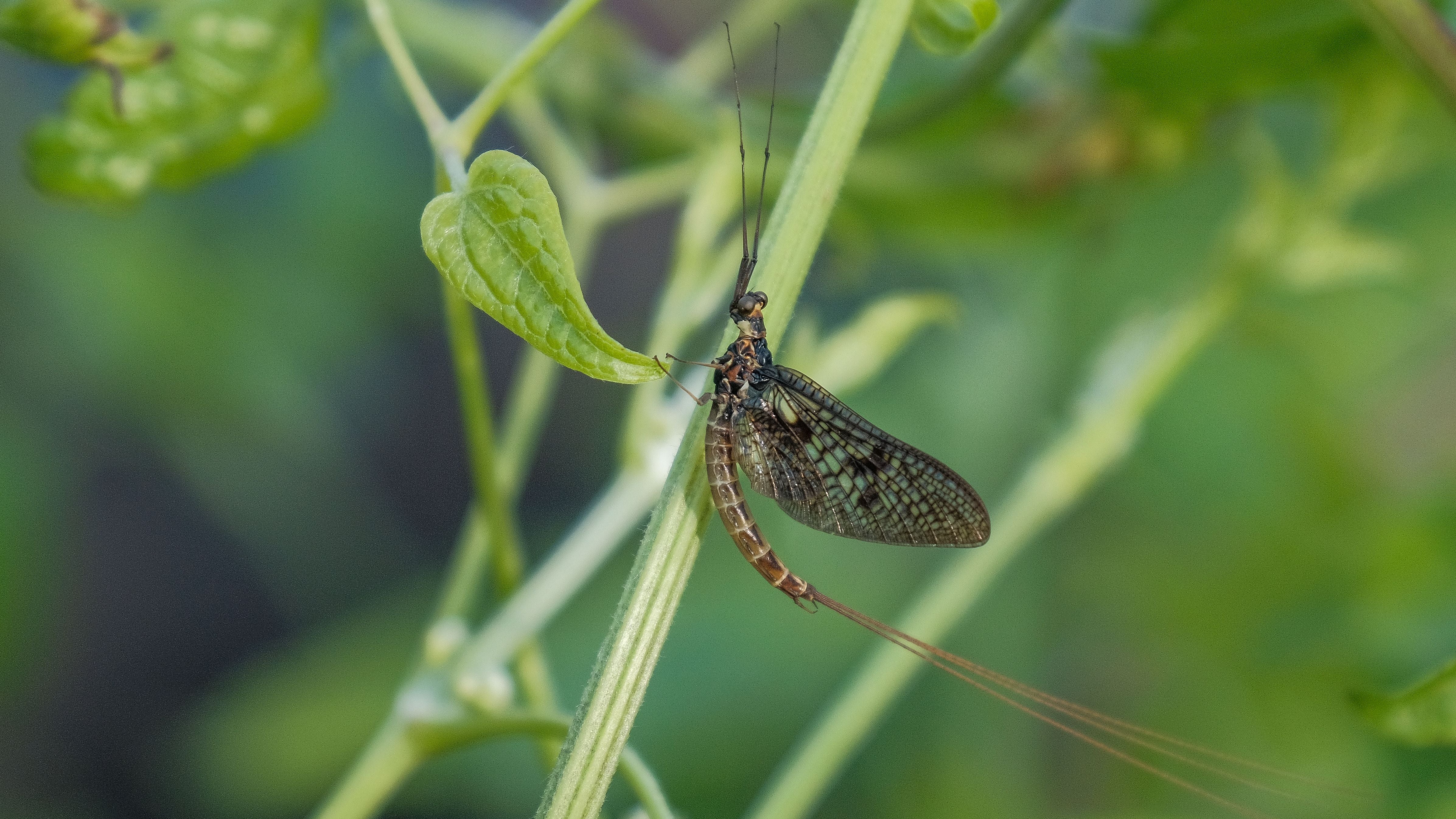Mayflies have a so-called incomplete transformation - Hemimetabolic transformation. This means that they go from the stage of being an egg to a larva before hatching into a winged insect in the water surface. The larval stage of mayfly is often called a nymph among fly fishermen. Mayflies always lay their eggs in water and the larval stage is spent in the same environment until it transforms into a winged insect. In Sweden there are approx: 60 species of mayflies and they are in all stages an important food for a number of fish species. For a fly fisherman, these are therefore of great importance. However, we do not need to be able to imitate all these species exactly. Many are similar to each other and the fish cannot distinguish them all.
After the mayflies have laid their eggs, they die and generally end up on the surface of the water. The insect then has its wings pointed straight out from each side of the body. As a fly fisherman, these dead mayflies are imitated with flies called spent spinners. The mayfly hatch most frequently at the beginning of summer, but hatches occur from spring to autumn. The transformation from larva to winged insect takes place during the day, but egg-laying generally occurs at dusk. Therefore, it is of great importance that you have flies that imitate all the important stages of the mayfly - larva (nymph) – emerger (imitates a nymph that hatches into a winged insect) –winged mayfly –spent spinner (dead mayfly).
Mayflies are one of the more important components of many fish's diet. For the fly fishers, they are like the puck in a hockey game - no puck, no game. Few insects can hatch in such abundant quantities and induce such selectivity in fish species as, for example, trout. This is not just about the fish targeting mayflies, but they often become selective at just one stage in the hatching process. Hence, it is of the utmost importance that we as fly fishermen can imitate all stages of the mayfly. The larva (nymph), the emerger, the winged insect and finally the spent spinner. Here it is also important to match size and color correctly. And as always, a good imitation, a fly that closely resembles the mayfly that hatch, will greatly increase your chances. Hey, it's a bit like walking into a bike shop looking for a racer, but walking out with a mountain bike. You simply don't, a mountain bike can never imitate than a racer.

